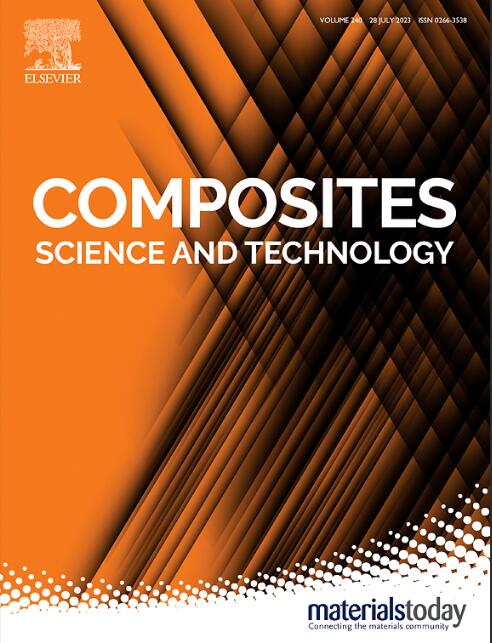针刺织物的双层结构策略协同提高纳米多孔酚醛复合材料的力学和热性能
IF 9.8
1区 材料科学
Q1 MATERIALS SCIENCE, COMPOSITES
引用次数: 0
摘要
针刺织物因其成本效益和设计灵活性而被广泛应用于烧蚀纳米孔酚醛复合材料的增强。然而,实现机械和热性能协同优化的结构设计仍然是一个重大挑战。为了解决这一问题,本研究开发了一种由顶部高密度烧蚀层和底部低密度绝缘层组成的双层针刺织物结构。制作了不同烧蚀层厚度比(13%、33%和53%)的npc,并通过宏观微观力学测试、传热测试和系统的高温烧蚀实验对其进行了系统评估。结果表明,当烧蚀层比为33%时,NPC的抗拉强度达到最高(42.6±0.82 MPa),其承载能力和应变容限达到最佳平衡。拉伸载荷下的原位微ct分析表明,高密度烧蚀层提供紧密编织的纤维纱线,显著提高了材料的强度和延展性。传热模拟表明,高密度层是主要的导热路径,而低密度层通过限制固体纤维的传热有效地降低了总导热系数。氧乙炔在2000℃和3200℃下的烧蚀试验表明,由于紧密编织的烧蚀层有效地承受了极端的热通量,与单层npc相比,双层结构的线性烧蚀率降低了约25%。本研究为针刺织物增强npc的结构优化提供了新的见解,并为极端航空航天环境下先进热防护材料的设计提供了指导。本文章由计算机程序翻译,如有差异,请以英文原文为准。

Dual-layer structural strategy in needle-punched fabrics for synergistic improving mechanical and thermal performance of nanoporous phenolic composites
Needle-punched fabrics are widely utilized to reinforce ablative nanoporous phenolic composites (NPCs) due to their cost-effectiveness and design flexibility. However, achieving a structural design that synergistically optimizes both mechanical and thermal performance remains a significant challenge. This study aims to address this issue by developing a dual-layer needle-punched fabric structure consisting of a top high-density ablation layer and a bottom low-density insulation layer. NPCs with varying ablation layer thickness ratios (13 %, 33 %, and 53 %) are fabricated and systematically evaluated through macro-micro mechanical tests, heat transfer test, and systematic high-temperature ablation experiments. Results show that NPC with a 33 % ablation layer ratio achieves the highest tensile strength (42.6 ± 0.82 MPa), owing to an optimal balance between load-bearing capacity and strain tolerance. In-situ micro-CT analysis under tensile loading reveals that the high-density ablation layer significantly enhances both strength and ductility by providing tightly woven fiber yarns. Heat transfer simulations indicate that the high-density layer serves as the primary heat conduction path, while the low-density layer effectively reduces overall thermal conductivity by limiting solid fiber heat transfer. Oxy-acetylene ablation tests at 2000 °C and 3200 °C demonstrate that the dual-layer structure reduces the linear ablation rate by approximately 25 % compared with single-layer NPCs, as the tightly woven ablation layer effectively withstands extreme heat flux. The present work offers new insights into the structural optimization of needle-punched fabric reinforced NPCs and provide design guidelines for advanced thermal protection materials in extreme aerospace environments.
求助全文
通过发布文献求助,成功后即可免费获取论文全文。
去求助
来源期刊

Composites Science and Technology
工程技术-材料科学:复合
CiteScore
16.20
自引率
9.90%
发文量
611
审稿时长
33 days
期刊介绍:
Composites Science and Technology publishes refereed original articles on the fundamental and applied science of engineering composites. The focus of this journal is on polymeric matrix composites with reinforcements/fillers ranging from nano- to macro-scale. CSTE encourages manuscripts reporting unique, innovative contributions to the physics, chemistry, materials science and applied mechanics aspects of advanced composites.
Besides traditional fiber reinforced composites, novel composites with significant potential for engineering applications are encouraged.
 求助内容:
求助内容: 应助结果提醒方式:
应助结果提醒方式:


